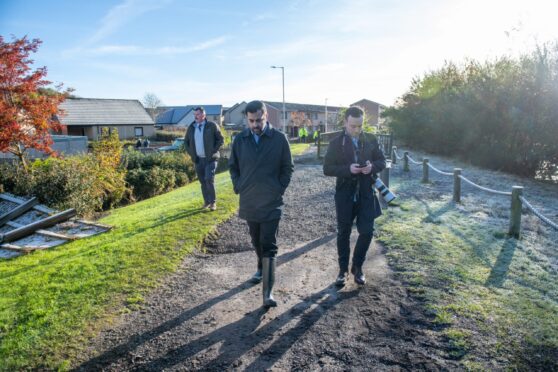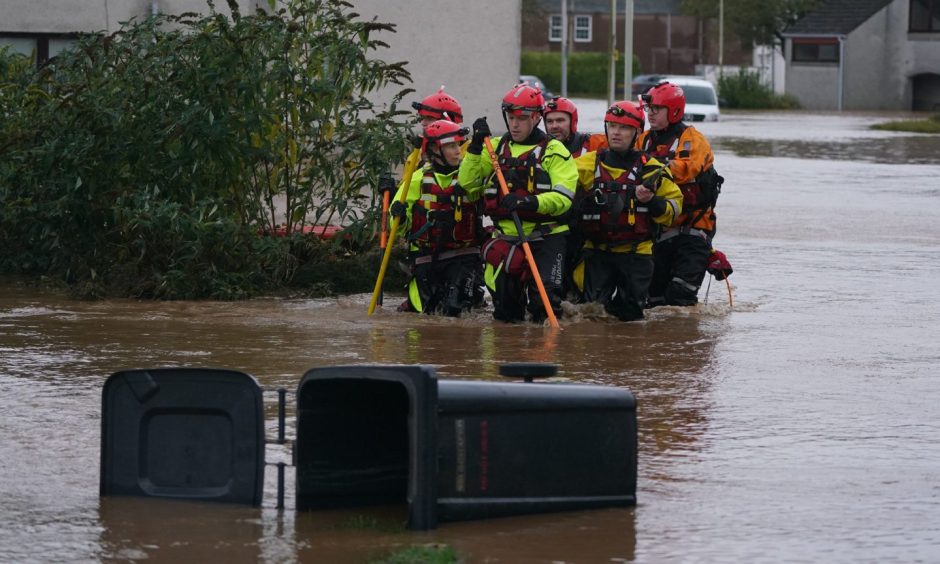
SNP ministers have been accused of leaving Scotland vulnerable to devastation from floods over a series of delays to promised reports and funding.
Heavy rainfall and a succession of major weather events have caused chaos across the country, with the Scottish Fire and Rescue Service finding flooding incidents have almost doubled year on year.
The Scottish Government promised an extra £150 million for prevention measures in 2020 but it has emerged that three years into a five-year programme, just £31 million has been spent.
It means more than halfway through the scheme and despite Scotland being repeatedly battered by storms, 80% of the promised funding has been left unspent.
Minsters say they have not yet decided how to use this year’s allocation.
Communities ‘in the dark’
The government has also failed to comply with its legal obligations to report progress on flood risk management, which opponents say has left at-risk communities “in the dark for years”.
The 2009 Flood Risk Management Act requires ministers to report on its progress on measures “as soon as practicable after the end of each calendar” but the Scottish Government has not done so since 2020.
It also had not given a clear timescale for when the report will be published, indicating only that it is “pending”.
Scottish Labour Net Zero spokesperson Sarah Boyack called for immediate action.
She said: “The SNP’s legacy of failure on flood prevention has left Scotland vulnerable to the devastation we have seen in recent months.
“Communities have been hung out to dry by an SNP government that has sought to dodge responsibility at every turn.
“Scotland is facing an onslaught of floods without the necessary funding in place and with no up-to-date indication of how prepared we really are.
“This situation is simply untenable.
“With the risk of flooding increasing year on year, we desperately need a proper plan coupled with the promised funding to prevent flood chaos becoming a regular fixture.”
Outrage over lack of help
This week saw communities battered by Storm Gerrit just two months after Storm Babet devastated the North East – including in Brechin, where £16 million flood defences were breached.
In 2021, high winds from Storm Arwen wreaked havoc in Aberdeenshire.
Ministers have faced criticism for failing to react fast enough and for a lack of adequate preventative measures being in place, including failing to gather a special taskforce set up to support local residents until weeks after Storm Babet.
A confidential document obtained by The Sunday Post revealed that three weeks on, the group established by First Minister Humza Yousaf had yet to meet.
Shortly after our report, the government agreed a package of support including a £1,500 community recovery payment for individuals whose properties were flooded, and a £3,000 business recovery grant for businesses impacted by flooding.
It later emerged council chiefs in Angus privately complained at being left out in the cold.
Yousaf visited Brechin just days after the flooding hit in October and spoke of his shock a the severity of the damage.
But despite promises of working closely with the council, email exchanges released under Freedom of Information legislation reveal the frustrations of its chief executive.
No contact for weeks
Margo Williamson emailed communities director-general Louise MacDonald two days after the first minister’s visit.
The Angus official said: “The FM visited on Monday (October 23) and said several times that government were working with Angus on support for the people of Brechin.
“I clearly did not want to say otherwise but I am unaware of any contact from officers in government to outline what might be possible.”
And on October 31, Williamson wrote: “It is concerning almost two weeks on, that no officer in Scottish Government has contacted myself to ask how we are coping as a council or discuss how Scottish Government can lean into the recovery phase of Storm Babet.”
It was further revealed this week that Scotland’s new flood defences will cost at least three times as much as previously planned – and half of the projects are already running late.
The bill to protect the 11,000 homes most at risk of damage has soared from a projected £300 million to almost £1 billion.
Five of 42 Scottish Government improvement schemes are under construction while work on 18 others has not even begun yet, despite a 2021 deadline for completion.
What does the government say?
Net Zero Secretary Mairi McAllan said: “This year’s extreme weather events, such as the devastating Storm Babet, have underlined the need to think strategically about Scotland’s flooding future.
“It is imperative that we do all we can to become flood resilient in a changing climate, including the potential impacts of sea level rise.
“That’s why we have committed an additional £150 million over the course of this Parliament to deliver improved flood resilience.
“This is in addition to the £42 million we provide annually to councils for flood resilience through the general capital grant.
“And, looking to the future, we’re developing a new Flood Resilience Strategy for Scotland with communities at its heart.”

Enjoy the convenience of having The Sunday Post delivered as a digital ePaper straight to your smartphone, tablet or computer.
Subscribe for only £5.49 a month and enjoy all the benefits of the printed paper as a digital replica.
Subscribe


